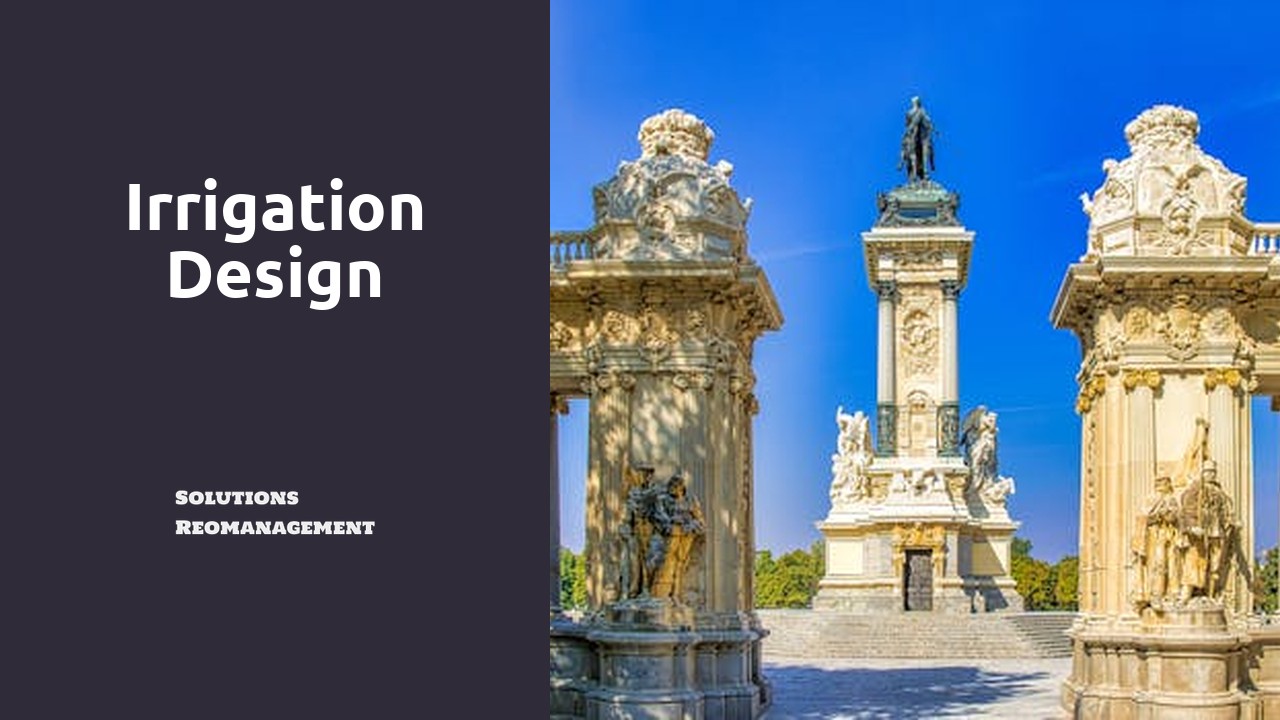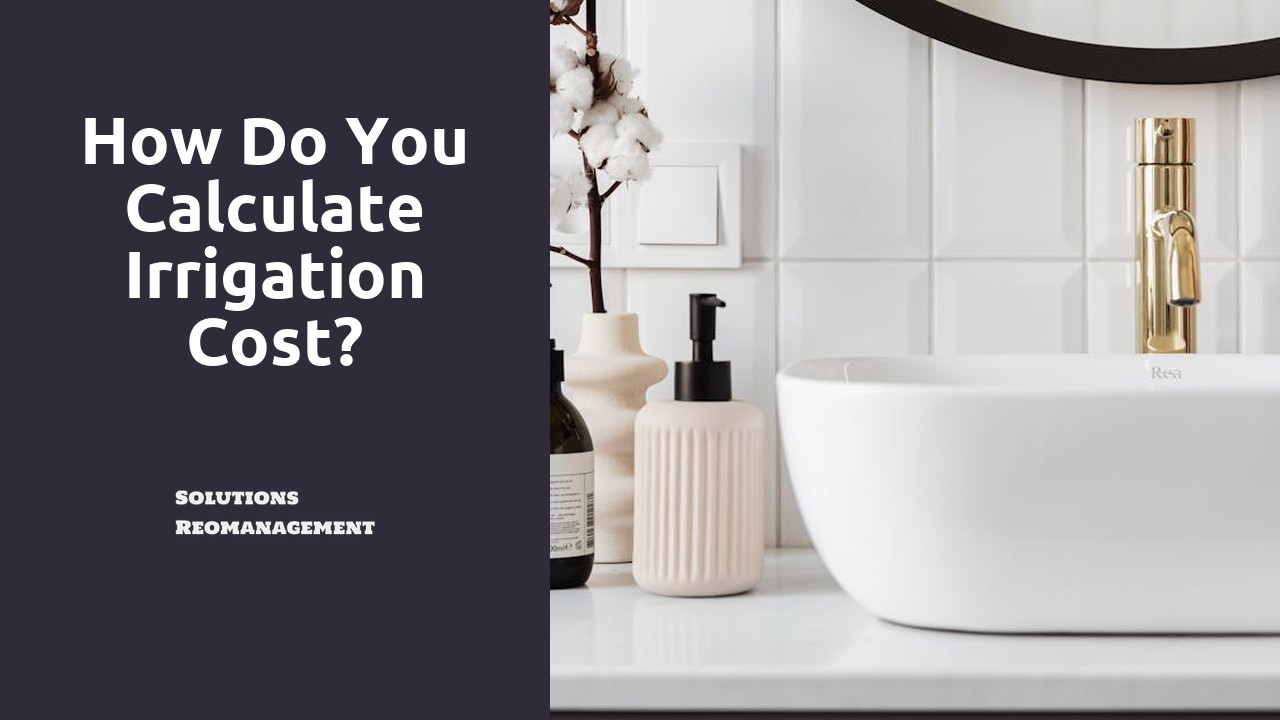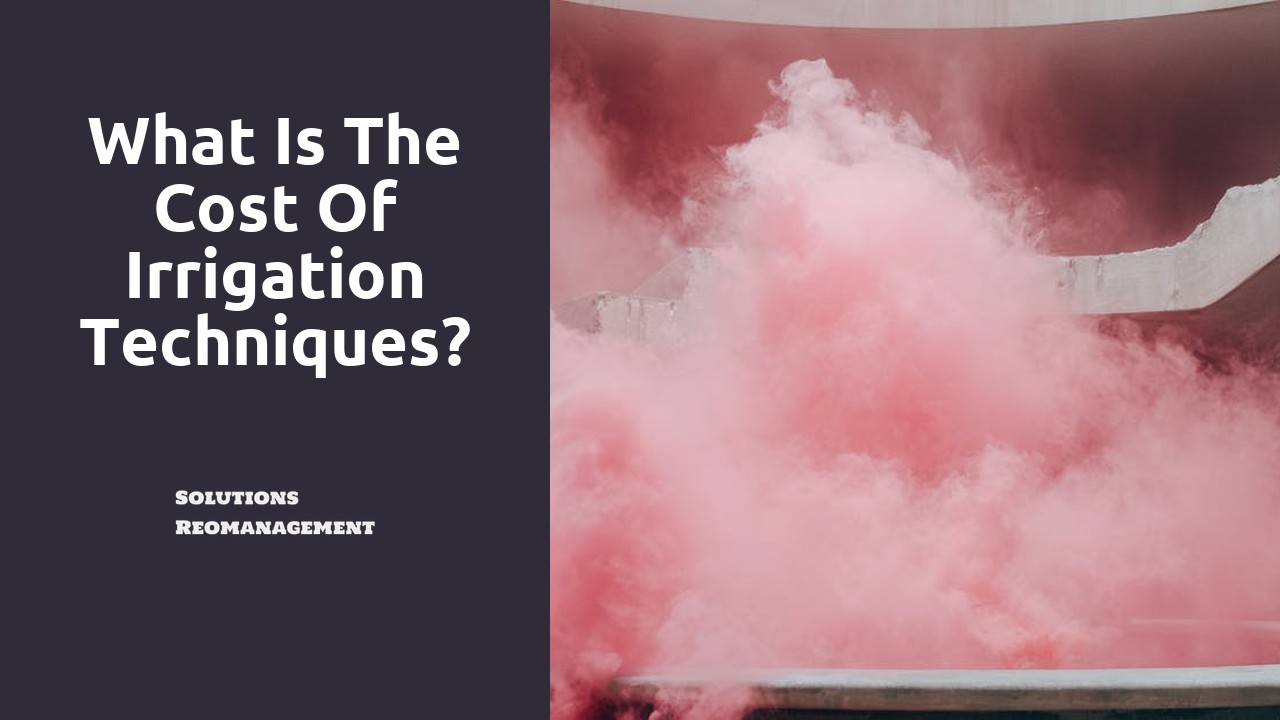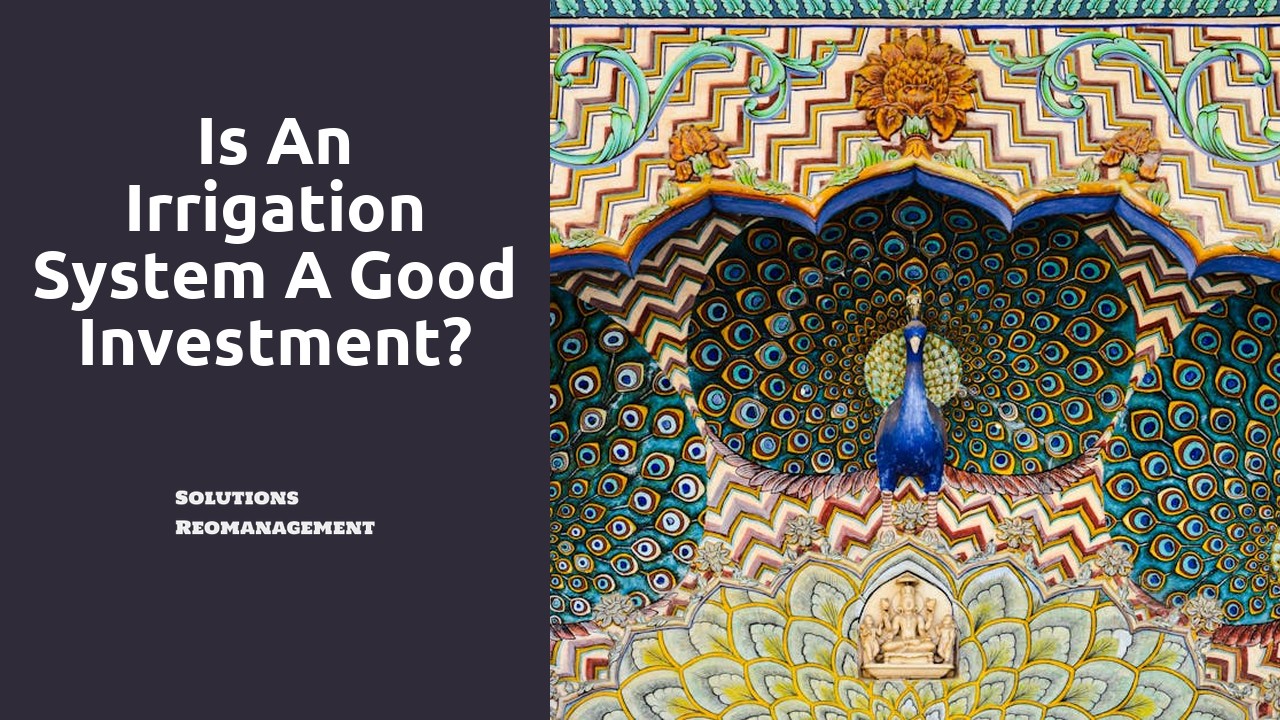
Irrigation Design
Table Of Contents
Solutions Reomanagement offers top-notch Irrigation Design services to help customers maximize water efficiency and plant health in their landscapes. Our team of experts specializes in creating custom irrigation systems tailored to fit each client's unique needs and budget. We take into account factors such as soil type, plant type, sun exposure, and slope to ensure optimal water distribution. By utilizing the latest technology and best practices in the industry, we design systems that minimize water waste and promote sustainable practices. Let Solutions Reomanagement be your partner in creating an efficient and effective irrigation system for your property.
Water Conservation Practices for Irrigation
Water conservation is a critical aspect of irrigation design, especially in regions where water resources are limited. Implementing efficient irrigation practices not only saves water but also reduces operational costs and environmental impact. One effective way to conserve water is by utilizing drip irrigation systems that deliver water directly to the roots of plants, minimizing evaporation and runoff.
Another water-saving practice is scheduling irrigation during the early morning or late evening hours when temperatures are cooler, reducing water loss due to evaporation. Additionally, regularly monitoring and adjusting irrigation schedules based on plant needs and weather conditions can prevent overwatering and ensure optimal water usage. By incorporating these water conservation practices into irrigation design, individuals can contribute to sustainable water management and healthier landscapes.
Utilizing Rainwater Harvesting Techniques
Rainwater harvesting is a sustainable practice that can significantly reduce the reliance on traditional water sources for irrigation purposes. By collecting rainwater from rooftops or other surfaces, gardeners and farmers can effectively supplement their water supply, especially during dry spells. Implementing rainwater harvesting techniques not only helps conserve water resources but also reduces water bills and the overall environmental impact of irrigation systems.
To utilize rainwater harvesting effectively, it is essential to install a system that captures and stores rainwater efficiently. This can involve setting up rain barrels connected to downspouts, installing larger cisterns for more extensive water storage, or even incorporating integrated systems that direct rainwater to specific irrigation zones. By maximizing the collection and storage capacity of rainwater, individuals can ensure a reliable and sustainable water source for their irrigation needs, contributing to both water conservation and cost savings in the long run.
Troubleshooting Common Irrigation Issues
Common irrigation issues can often arise, causing frustration for many gardeners and farmers. One prevalent problem is related to clogged nozzles that can obstruct water flow and lead to inefficient irrigation. To troubleshoot this issue, regularly inspect and clean the nozzles to ensure proper water distribution. Another common problem is misaligned sprinkler heads, which can result in uneven watering and water wastage. Check the alignment of the sprinkler heads and adjust them as needed to guarantee optimal coverage of the intended area.
Furthermore, leaks in the irrigation system can cause water loss and potential damage to surrounding plants or structures. To address this issue, conduct a thorough inspection of the pipes, fittings, and connectors for any signs of leaks, and promptly repair or replace damaged components. Additionally, inadequate water pressure in the system can hinder proper irrigation. Check the water source, filters, and valves for any obstructions or malfunctions that may be affecting water pressure, and make necessary adjustments to restore optimal flow.
Resolving Water Pressure Problems in the System
Resolving water pressure problems in an irrigation system is crucial for ensuring optimal performance and plant health. Low water pressure can lead to uneven water distribution, resulting in some plants receiving too much water while others are left thirsty. This can negatively impact plant growth and waste water resources. On the other hand, high water pressure can put stress on the irrigation system components, leading to leaks and inefficiencies.
To address low water pressure, start by checking for clogged filters or nozzles in the system. Clean or replace any obstructed components to allow for better water flow. Additionally, make sure that the water source is providing an adequate flow rate for the system's requirements. For high water pressure issues, consider installing pressure regulators to maintain a consistent pressure throughout the system. Regular maintenance and monitoring of water pressure levels will help prevent potential damage to the system and ensure efficient water distribution to all plants.
Enhancing Irrigation Efficiency
To optimize irrigation efficiency, it is vital to consider the layout and design of the irrigation system. Proper spacing of sprinklers or drip lines ensures uniform water distribution across the entire area being irrigated, reducing water wastage and achieving better coverage. Additionally, grouping plants with similar water requirements together can help in delivering the right amount of water to each plant, avoiding over or under-watering.
Moreover, incorporating smart irrigation technologies such as soil moisture sensors and weather-based controllers can significantly enhance efficiency. These tools allow for precise monitoring of soil moisture levels and weather conditions, enabling the system to adjust watering schedules accordingly. By harnessing the power of technology, irrigation systems can be fine-tuned to deliver water exactly when and where it is needed, promoting healthier plants while conserving water resources.
Using Mulch to Retain Soil Moisture
Using mulch to retain soil moisture is a simple yet effective technique that can significantly improve the efficiency of your irrigation system. By covering the soil with a layer of organic mulch, such as wood chips, straw, or leaves, you create a barrier that helps prevent water evaporation. This means that the moisture from irrigation or rainfall is retained in the soil for a longer period, reducing the frequency of watering needed for your plants.
In addition to reducing water evaporation, mulch also helps regulate soil temperature, suppress weeds, and improve soil structure as it decomposes. This creates a more favorable environment for plant growth, ensuring that your garden or landscape remains healthy and vibrant. When applying mulch, make sure to leave a small gap around the base of plants to prevent moisture-related diseases and rot. By incorporating mulching into your irrigation design, you can promote water conservation, enhance plant health, and reduce the overall maintenance required for your landscaping efforts.
FAQS
What are some water conservation practices for irrigation?
Some water conservation practices for irrigation include using drip irrigation systems, scheduling irrigation during early morning or late evening to reduce evaporation, and mulching to retain soil moisture.
How can rainwater harvesting techniques be utilized in irrigation design?
Rainwater harvesting techniques can be utilized in irrigation design by collecting rainwater from roofs or other surfaces and storing it for later use in irrigation, reducing the reliance on municipal water sources.
What are some common irrigation issues that may require troubleshooting?
Some common irrigation issues that may require troubleshooting include clogged nozzles, leaks in the system, uneven water distribution, and low water pressure.
How can water pressure problems in an irrigation system be resolved?
Water pressure problems in an irrigation system can be resolved by checking for any obstructions in the system, adjusting the pressure regulator, ensuring proper system design, and maintaining the system regularly.
How can using mulch enhance irrigation efficiency?
Using mulch can enhance irrigation efficiency by reducing evaporation, retaining soil moisture, suppressing weed growth, and improving soil structure, ultimately leading to reduced water usage and healthier plants.






